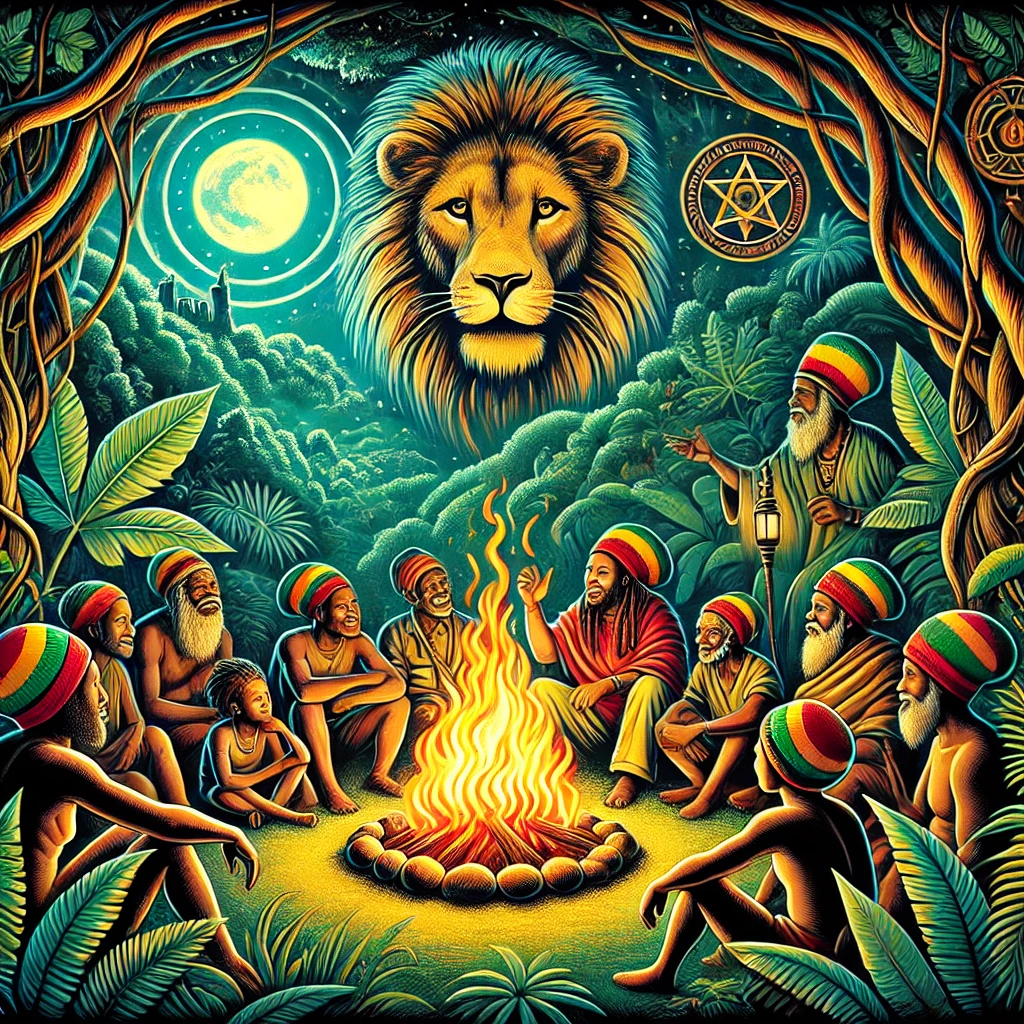Legends and Stories That Shape Rasta Teachings
Rastafarianism is rich with folklore, stories, and oral traditions dat have been passed down through generations. These hidden gems offer insights into Rasta spirituality, culture, and resistance against Babylon. Rooted in African traditions and Jamaican history, Rastafarian folklore serves as a bridge between di past and present, keeping alive di wisdom and resilience of di Rasta people.
What is Rastafarian Folklore?
Folklore in Rastafarianism is a collection of stories, proverbs, and legends dat reflect di values and beliefs of di Rasta community. Much of dis folklore highlights themes like liberation, unity, and di connection between humanity and Jah (God). Whether shared through storytelling, music, or rituals, these narratives carry spiritual lessons and inspire people to stay true to Jah’s path.
Key Themes in Rasta Folklore
- Resistance Against Babylon
Many Rasta stories focus on resistance to Babylon, di oppressive system of materialism and injustice. Folktales often feature figures who outsmart or overcome powerful adversaries, symbolizing di Rasta fight for freedom and righteousness. - The Power of Nature
Nature is central to Rasta folklore, reflecting di belief dat Jah’s presence can be found in di natural world. Stories about animals, plants, and elements like fire and water emphasize di importance of living in harmony with Jah’s creation. - The Role of Ancestors
Ancestors play a vital role in Rasta storytelling, representing wisdom, strength, and guidance. Folklore often includes references to di Maroons, African warriors, and spiritual leaders who inspire Rastas to stay resilient. - Prophecies and Visions
Many Rasta legends feature prophecies about Zion (Ethiopia) and di return to Africa. These stories fuel di spiritual connection to Haile Selassie I and di dream of repatriation.
Notable Stories and Legends
- The Legend of Nanny of di Maroons
Nanny, a legendary Maroon leader, is celebrated in Rasta folklore as a symbol of courage and resistance. Stories of her bravery in leading enslaved Africans to freedom inspire Rastas to stand firm against Babylon. - The Lion of Judah
Stories about di Lion of Judah, a symbol of Haile Selassie I, appear frequently in Rasta folklore. These tales emphasize strength, courage, and di divine nature of Selassie as di messiah. - The Herb That Elevates
Folklore surrounding ganja (cannabis) tells of its sacred origins as a gift from Jah. Stories often describe how di herb helps to elevate di mind, connect wid Jah, and resist Babylon’s influence. - The Trickster Spirit
In some Rasta stories, a trickster figure emerges to challenge di forces of oppression. These tales highlight di importance of wit and strategy in overcoming challenges.
How Folklore Shapes Rasta Culture
Rastafarian folklore is not just entertainment—it’s a way of preserving culture, teaching spiritual lessons, and inspiring resistance. Folklore is shared in reasoning sessions, Nyabinghi gatherings, and through reggae music, making it an integral part of Rasta identity.
For example, reggae songs often draw from folklore to share messages of unity, liberation, and spiritual enlightenment. Artists like Bob Marley and Burning Spear have used these stories to spread Rasta teachings worldwide.
The Importance of Keeping Folklore Alive
As modern influences reshape traditions, it’s essential to keep Rasta folklore alive. These stories connect Rastas to their roots, preserving di wisdom of ancestors and inspiring future generations. By sharing folklore, Rastas pass on lessons of love, courage, and spirituality dat transcend time.
Conclusion
Rastafarian folklore is a treasure trove of wisdom, resilience, and spiritual connection. These hidden gems not only inspire Rastas but also offer valuable lessons for anyone seeking Jah’s light. By honoring and sharing these stories, we keep alive di spirit of di Rasta movement and di enduring power of oral tradition.

